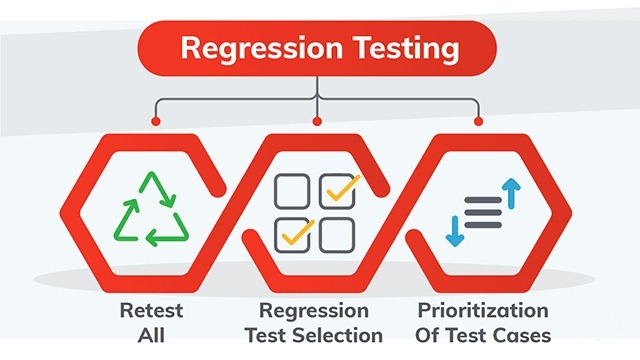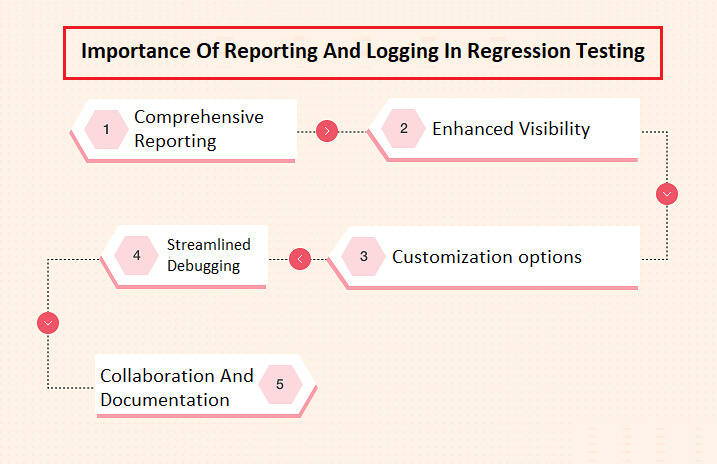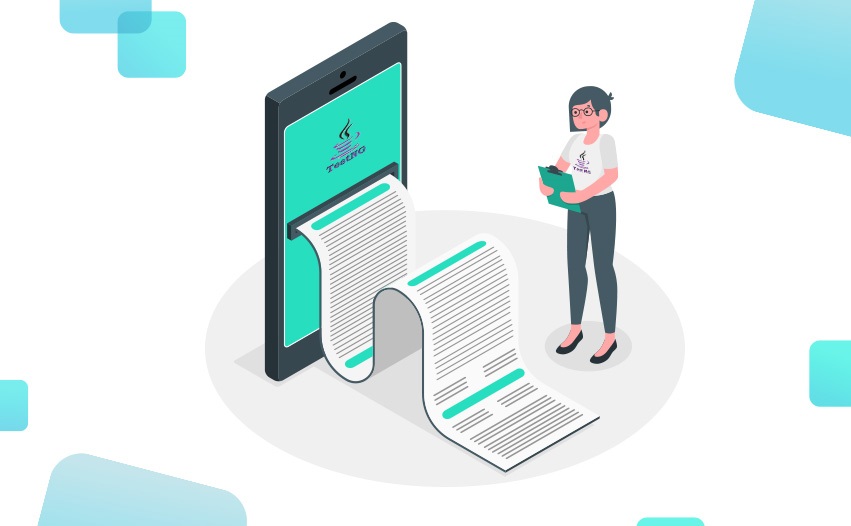Introduction
A key component of software development that guarantees the dependability and stability of applications is regression testing. Verifying that existing functionality continues to perform as intended becomes increasingly important as software develops and new features are introduced. TestNG, a well-known testing framework, has sophisticated reporting and logging tools that improve visibility and facilitate effective analysis of test results. TestNG has a wide range of tools that testers can use to their advantage to learn more about the execution of tests and their outcomes. Detailed reports, including information on test suite summaries, test case statuses, execution times, and stack traces for failed tests, are produced by the framework’s robust reporting capability.
In order to successfully analyze test findings and make choices on regression testing, stakeholders need access to these reports. The logging features of TestNG also record important data such as test setup specifics, test results, and error messages. By assisting in the debugging process and assuring the dependability of software programs, this logging capability supports testers in tracking the execution flow, troubleshooting errors, and looking into problems.
A Guide to Choosing an Automated Testing Tool
Understanding Regression Testing And Its Association With TestNG

Regression testing is a testing method used to ensure that new modifications won’t negatively impact an application’s existing features. To find any unanticipated regressions, it entails rerunning previously run test cases. Regression testing is essential for preserving software stability, avoiding serious problems, and guaranteeing an effective end product.
TestNG, a popular testing framework developed for Java applications, is essential for regression testing. It has extensive features and functionalities that outperform existing frameworks, making it a popular alternative for testers seeking efficient and effective test execution. TestNG offers broad support for regression testing scenarios, as well as full reporting and logging options that improve visibility and allow for in-depth examination of test results.
TestNG allows testers to conduct tests in real-time, assuring complete coverage of the application under test. The reporting capability of the framework generates thorough information such as test suite summaries, individual test case statuses, execution timings, and stack traces for failed tests. These reports provide useful insights to stakeholders, allowing for informed decision-making during regression testing. Furthermore, TestNG’s logging features capture essential information, such as error messages and stack traces, which aids in debugging and problem resolution.
You can perform TestNG regression testing with LambdaTest – a next-gen digital experience testing platform trusted by over 2 million users globally. The platform offers a secure, reliable, and high-performance test execution cloud built for enterprise needs and scalability with features such as live testing, automated testing, mobile app testing, blazing fast AI-powered test execution, AI-powered visual regression testing over 3000+ environments, and real devices. Begin your free test trial with LambdaTest today.
Overall, TestNG’s advanced features and functionalities make it a strong regression testing framework, allowing testers to improve the quality and reliability of their Java applications.
TestNG Reporting: Enhancing Visibility and Analysis
The reporting capabilities of TestNG are critical in improving visibility and analysis during software testing. The framework creates detailed reports that provide significant insights into the test execution process. These reports offer critical information such as test suite summaries, individual test case statuses, execution timings, and even stack traces for failed tests. TestNG’s reporting function enables stakeholders to readily analyze test results and find patterns or trends by displaying statistical data, graphs, and visual representations. This increased visibility allows for more informed decision-making and assists teams in gaining a better grasp of the quality and performance of their software applications.
In addition to detailed reporting, TestNG provides advanced analysis options that improve the visibility of test results. TestNG allows for test case grouping and categorization, enabling for targeted examination of certain test scenarios or functional areas. This grouping feature assists in detecting potential areas of concern or high-risk regions of the application. Furthermore, TestNG’s reporting capabilities can be tailored to specific project needs, allowing teams to focus on the metrics and information that are most important to their testing goals. TestNG’s reporting and analysis features enable testers to get useful insights, make educated decisions, and increase the overall effectiveness of their testing operations.
TestNG Logging: Capturing Critical Information
Logging is critical in regression testing, and TestNG provides versatile and comprehensive logging options that allow for effective analysis of test execution. TestNG enables testers to collect essential information at various degrees of detail, allowing them to trace the execution flow and obtain insights into the behavior of the software application under test. TestNG provides a thorough record of the testing process by logging test setup parameters, input data, intermediate results, and error messages. This aids in debugging and spotting potential issues.
The logging component of TestNG seamlessly integrates with well-liked logging frameworks like Log4j or Logback, which is one of its main benefits. This integration gives testers more flexibility and customization options by utilizing the sophisticated logging features of these frameworks. In accordance with their particular requirements, testers can set logging levels, define log output locations, and manage the amount of granularity of the logged data. Testers may speed up the debugging process, convey problems to development teams in an effective way, and guarantee the dependability and stability of the tested product by making use of the strong logging tools provided by TestNG.
The Most In-Demand Programming Languages to Learn in 2022
Importance Of Reporting And Logging In Regression Testing

1. Comprehensive Reporting
The reporting features of TestNG provide in-depth perceptions of the regression testing procedure. It offers a comprehensive view of test suite summaries, pass/fail/skip statuses for individual test cases, execution timings, and stack traces for failed tests. Stakeholders may simply follow the testing’s progress, spot problem areas, and base decisions on the generated reports. Statistics, graphs, and other visual representations are part of the reporting feature, which makes it easier to analyze data and spot patterns or trends.
2. Enhanced Visibility
The reporting function of TestNG gives stakeholders a clear knowledge of the test results, which improves visibility during regression testing. Complex data is presented in a clear and understandable way using graphical elements and visual representations, such as pie charts and bar graphs. By making the testing process more visible overall, stakeholders are better able to spot possible problem areas, dangers, or bottlenecks.
3. Customization options
TestNG enables report modification to meet particular project needs. Testers can customize the reports by selecting the metrics and data that are most pertinent to their testing goals. This personalization guarantees that interested parties get the information they require to decide wisely and successfully prioritize their efforts.
4. Streamlined Debugging
By recording important data during the test execution process, TestNG’s logging capabilities play a significant role in regression testing. Logging keeps track of specifics such as test setup data, test outcomes, intermediate results, and error messages. This information is essential for resolving errors, locating the source of problems, and quickening the debugging procedure. With flexible configuration options for logging levels and output destinations, TestNG effortlessly interfaces with well-known logging frameworks like Log4j or Logback.
5. Collaboration And Documentation
By offering a thorough record of the testing process, TestNG’s logging function makes it easier for team members to collaborate. Developers can more quickly identify the root cause of problems and understand the context of failures by sharing logs with testers. The logs are an invaluable resource for documenting, preserving the timeline of the testing operations, and promoting knowledge sharing among team members.
Best Practices for Effective TestNG Reporting and Logging
It’s crucial to adhere to best practices to get the most out of TestNG’s reporting and logging features. To ensure concentrated efforts, clearly outline the objectives for regression testing first. Use relevant exam names for easier reading and comprehension, and group tests logically to create an effective organizational structure. Utilise TestNG groups and annotations to classify tests according to their importance or functionality. Select the proper logging levels to record the necessary data without complicating the troubleshooting procedure. Format reports to meet the demands of stakeholders and customize reporting output to incorporate relevant components. Review and analyze results frequently to spot trends, pinpoint areas for development, and come to wise testing-related conclusions.
Testing professionals may improve the efficiency of TestNG reporting and logging by putting these best practices into practise. Comprehensive reports result from clear objectives, well-organized tests, understandable names, comments, appropriate recording settings, and customization possibilities. Regular report analysis helps to identify potential problems and improve decision-making. Following these guidelines guarantees efficient test result analysis and aids teams in getting the most out of TestNG’s reporting and logging features.
Conclusion
The reporting and logging capabilities of TestNG are crucial for efficient regression testing, to sum up. The thorough reports produced by TestNG give stakeholders insightful information about the test execution process, allowing them to monitor progress, spot failed test cases, and assess how changes may affect current functionalities. The reports include a variety of information, including execution timings, stack traces for failed tests, summaries of test suites, and individual test case statuses. The reporting component of TestNG improves visibility and makes it easier to see patterns or trends by displaying statistical data, graphs, and visual representations.
TestNG’s logging features are crucial for regression testing since they record crucial data while tests are running. Testing professionals may precisely trace the execution flow, examine errors, and speed up the debugging process by logging test setup information, input data, intermediate outcomes, and error messages. TestNG’s logging capabilities are further improved by the integration with well-known logging frameworks like Log4j or Logback, which offer sophisticated logging functionality and flexibility in specifying logging levels and output destinations. It is essential to adhere to best practices such as clearly defining test objectives, organizing tests efficiently, using relevant test names, utilizing annotations and groups, and using the proper logging settings in order to get the most out of TestNG reporting and logging. Testers can ensure well-structured reports, insightful logs, and efficient test result analysis by following these standards. Regression testing efforts are continuously improved through regular examination and analysis of data that assist in identifying trends, potential problems, and areas for development.
The reporting and logging features of TestNG, in summary, greatly enhance the efficacy of regression testing. Testers are given the tools necessary to conduct in-depth analysis and come to well-informed judgments thanks to the robust collection of capabilities offered by TestNG, including detailed reports, improved visibility, customization possibilities, and an easy interface with logging frameworks. Testers can enhance the quality and dependability of software products, teamwork among members, and user experiences by utilizing these features and adhering to recommended practices. Any tester looking to maximize regression testing efforts and guarantee the success of their projects should have access to TestNG’s reporting and logging services.




